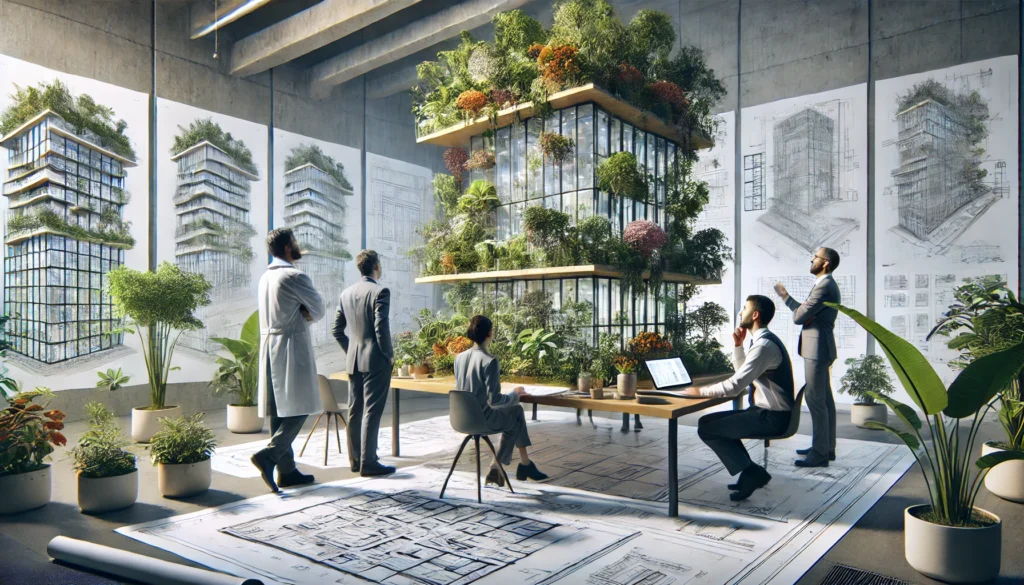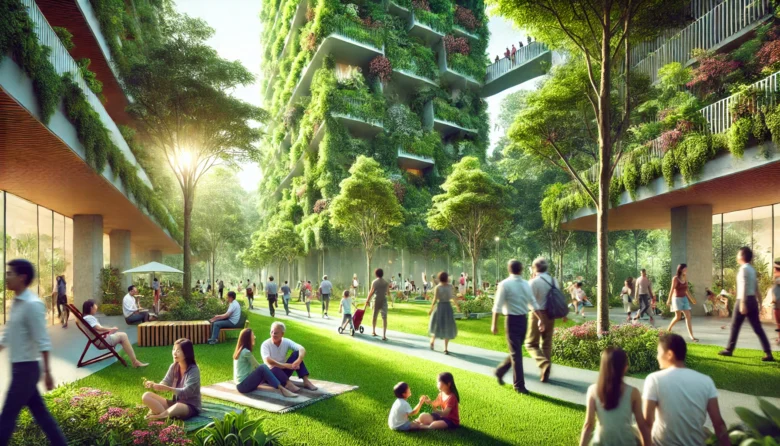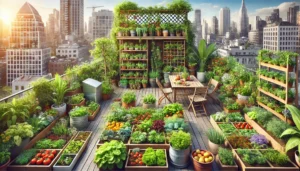Imagine living in a city where lush greenery isn’t just confined to parks and gardens but is integrated into the very buildings we inhabit. Vertical forests are revolutionizing urban landscapes by integrating nature directly into architecture. This innovative approach not only beautifies our cities but also offers a host of environmental and health benefits. In this blog, we’ll explore the concept of vertical forests and how they can transform urban living in India.
What are Vertical Forests?
Vertical forests are buildings that incorporate trees, shrubs, and plants into their design, creating a forest-like environment on multiple levels. This concept goes beyond traditional green walls or rooftop gardens, aiming to create a self-sustaining ecosystem within urban structures. The plants are strategically placed to optimize sunlight, water, and soil conditions, allowing them to thrive in a vertical setup.
The Benefits of Vertical Forests
Vertical forests offer numerous benefits that make them an appealing solution for urban areas:
Air Quality Improvement: Plants absorb carbon dioxide and release oxygen, improving air quality. They also filter pollutants and dust from the air, making the surrounding environment healthier.
Temperature Regulation: The greenery acts as a natural insulator, reducing the urban heat island effect. This helps in lowering temperatures in densely populated areas, providing a cooler and more comfortable living environment.
Noise Reduction: The vegetation in vertical forests can act as a sound barrier, reducing noise pollution from traffic and other urban activities.
Biodiversity Support: Vertical forests create habitats for birds, insects, and other wildlife, promoting urban biodiversity. This can help sustain local ecosystems and increase the presence of beneficial species.
Aesthetic Appeal: Vertical forests enhance the visual appeal of buildings, transforming them into living artworks. This can uplift the mood of residents and passersby, contributing to overall well-being.
Energy Efficiency: By regulating temperatures and providing natural insulation, vertical forests can reduce the need for air conditioning and heating, leading to energy savings.

Vertical Forests Around the World
The concept of vertical forests is gaining traction globally, with several iconic projects leading the way:
Bosco Verticale (Vertical Forest) in Milan, Italy: Designed by architect Stefano Boeri, this pair of residential towers features over 900 trees and 20,000 plants. It serves as a model for integrating green architecture in urban settings.
Nanjing Green Towers in China: Also designed by Stefano Boeri, these towers are covered with thousands of trees and plants, absorbing carbon dioxide and producing oxygen for the city.
One Central Park in Sydney, Australia: This mixed-use building incorporates vertical gardens designed by French botanist Patrick Blanc, providing a stunning example of green urban living.
Vertical Forests in India
India, with its rapid urbanization and environmental challenges, stands to benefit greatly from vertical forests. Here are some potential benefits and projects:
Improving Urban Air Quality: Cities like Delhi and Mumbai face severe air pollution. Vertical forests can help mitigate this by increasing green cover and filtering pollutants.
Creating Green Spaces: With limited space for traditional parks, vertical forests offer an innovative way to introduce greenery into crowded urban areas.
Enhancing Aesthetic Appeal: Incorporating greenery into buildings can transform the urban landscape, making cities more attractive and livable.
Supporting Biodiversity: Vertical forests can provide habitats for urban wildlife, helping to sustain biodiversity in cities.
Challenges and Solutions
While the benefits of vertical forests are clear, implementing them comes with challenges:
Cost: The initial cost of designing and constructing vertical forests can be high. However, long-term benefits such as energy savings and increased property values can offset these costs.
Maintenance: Maintaining vertical forests requires specialized knowledge and ongoing care. Investing in automated irrigation systems and hiring trained horticulturists can address this issue.
Structural Considerations: Buildings need to be designed or retrofitted to support the weight of soil and vegetation. Collaboration between architects, engineers, and botanists is crucial for successful implementation.
Water Usage: Ensuring efficient water use is essential, especially in water-scarce areas. Rainwater harvesting and greywater recycling can provide sustainable water sources for vertical forests.
How to Promote Vertical Forests
To encourage the adoption of vertical forests in India, several steps can be taken:
Government Incentives: Policies that offer financial incentives, tax breaks, or grants for green building projects can motivate developers to invest in vertical forests.
Public Awareness: Educating the public about the benefits of vertical forests can increase demand and support for such projects. Community engagement and outreach programs can play a key role.
Collaboration with Experts: Partnering with architects, botanists, and environmental scientists can ensure that vertical forest projects are well-designed and sustainable.
Pilot Projects: Launching pilot projects in major cities can demonstrate the feasibility and benefits of vertical forests, paving the way for broader adoption.
Conclusion
Vertical forests represent an exciting fusion of architecture and nature, offering a sustainable solution to urban challenges. By integrating greenery into our buildings, we can improve air quality, regulate temperatures, support biodiversity, and create more beautiful, livable cities. In India, where urbanization is rapidly transforming the landscape, vertical forests have the potential to revolutionize urban living. Let’s embrace this innovative approach and work towards a greener, healthier future.
Author’s Note
Thank you for exploring the concept of vertical forests with me. I hope this blog inspires you to think creatively about how we can integrate nature into our urban environments. Together, we can make our cities greener and more sustainable.
G.C., Ecosociosphere contributor.
References and Further Reading
- Bosco Verticale – An Icon of Green Architecture
- Vertical Forest Institute – Promoting Green Architecture
- What Is A Planter?. https://globalreachceramic.com/blog_details.html?id=123
- Attractive Custom Fences | Economy Landscaping. https://landscapingseattle.com/fence-installation/
- Segi System. https://segiair.co.kr/?main=1


